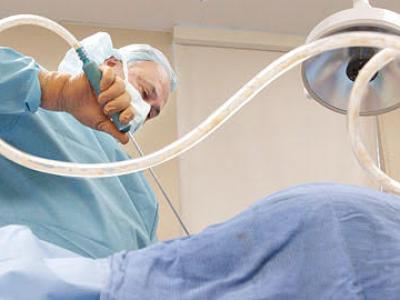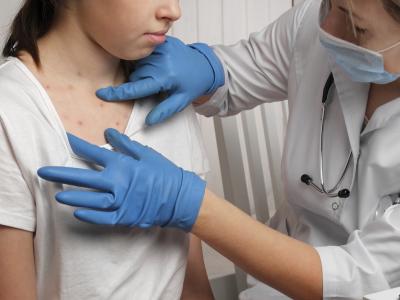Our weekly wrap-up of antimicrobial stewardship & antimicrobial resistance scans
Report: San Francisco food antibiotic ordinance hampered by lack of data
A new report from the San Francisco Department of the Environment on a 2017 ordinance that required chain grocers to report on antibiotic use by producers of the raw meat and poultry they sell says the ordinance has been hampered by producers being unable or unwilling to provide the information.
Under the ordinance, 10 grocery chains, representing more than 100 individual retail stores in San Francisco, were required to report antibiotic use policies and practices for almost 350 meat and poultry products sold in the study starting in 2018. The report found that, while grocers sought to comply with the ordinance, and many producers provided policy-level information about antibiotic use, few producers provide full data on antibiotic use. In addition, much of the data that were reported were incomplete and/or contained many errors.
The report also found the poultry industry provided far higher levels of transparency than the beef, pork, and lamb sectors, with data from conventional chicken producers showing significantly lower levels of antibiotic use than conventional turkey producers. Of 115 beef providers, only 1—which produced two products—provided antibiotic use date. No pork producers provided antibiotic use data.
"Ultimately, this first report reveals that antibiotic use in meat and poultry production is shrouded behind an industry-created veil, making it difficult for not only the public but grocers themselves to understand the practices behind the food they purchase," the report states. "San Francisco's Ordinance is a first step toward bringing these practices to light; more jurisdictions passing similar transparency requirements could provide additional market pressure necessary to transform the livestock industry into one that is fully transparent about its use of antibiotics."
March 2020 SF Environment report
MDR Klebsiella cluster detected in Arizona nursing home
Originally published by CIDRAP News Mar 12
A paper today in the Centers for Disease Control and Prevention's (CDC's) Morbidity and Mortality Weekly Report describes a small cluster of multidrug-resistant Klebsiella pneumoniae detected at an Arizona nursing home.
The cluster was first detected in August 2018 when the Mariposa County Department of Public Health (MCDPH) identified two isolates of carbapenemase-producing K pneumoniae (KPC-KP) in urine samples from two residents of a ventilator-capable unit in a skilled nursing facility. Both residents had urinary tract infections and resided in neighboring rooms. Further analysis of the isolates by the CDC's Antibiotic Resistance Laboratory Network suggested healthcare-associated transmission, and the Arizona Department of Health Services investigated the cluster to prevent additional cases.
Immediate contact screening for KPC-KP colonization among 26 residents who were in the ventilator-capable unit at the same time as the index patients detected KPC-KP isolates in five asymptomatic contacts, three of which had indistinguishable pulsed-field gel electrophoresis patterns from the isolates in the two index patients, a finding that further supported healthcare-associated transmission. A site visit to the facility in September 2018 to observe infection control practices found missed opportunities for hand hygiene before and after physical contact with residents, and lapses in aseptic technique during routine sterile procedures.
Re-screening of the 26 contacts in November 2018 to determine whether MCDPH's recommended control measures were successful in containing the cluster identified three additional cases of KPC-KP colonization.
The authors of the report conclude, "Closer adherence to CDC recommendations that could prevent health care–associated KPC-KP transmission include housing together residents with infection, improving adherence to hand hygiene, using gowns and gloves when interacting with residents who require mechanical ventilation or have tracheostomies, and implementing contact precautions for uncontained body fluids."
Mar 12 MMWR Notes from the field
Pharmacy-led UTI test demonstrates benefits in UK pilot study
Originally published by CIDRAP News Mar 12
A community pharmacy-led test-and-treat service for women with uncomplicated urinary tract (UTI) infections helped support appropriate use of antibiotics and reduced demand on other National Health Services (NHS) resources, English researchers reported today in JAC-Antimicrobial Resistance.
In the pilot study, researchers analyzed data on 764 women who presented to 23 pharmacies with UTI symptoms from December 2018 to April 2019. The test-and-treat service, developed by a team of physicians, pharmacists, and microbiologists, clinically assessed women aged 16 to 64 years for the possibility of uncomplicated UTI, with treatment based on the outcome of a urine dipstick test and National Institute for Health and Care Excellence guidelines. A novel smartphone app provided instructions on use and analysis of the dipstick test and recorded test results. Women were either advised on self-care, supplied with antibiotics, or referred to their general practitioner (GP).
Urine dipstick test results indicated 372 of 496 women (75%) were likely to have a lower UTI, and 360 of 372 of these women (96.8%) purchased antibiotics. Analysis of data indicating what action the women would have taken had the service not been available showed that nearly three-quarters (214/301, 71.1%) would have visited their GP, and more than one-third (116/301, 35.8%) would have attempted self-treatment.
"As pharmacists working within the community become more integrated into primary care networks, there is an opportunity for them to embed services such as this to support self-care and appropriate use of NHS resources," the study authors write. "This would support changing behaviour of patients with UTIs to utilize community pharmacies as the first port of call (i.e. changing to a 'pharmacy first' mentality) and allow for effective triage and treatment within this environment."
Mar 12 JAC-Antimicrobial Resistance study
Study: 3-drug antimalarial regimens effective, could delay resistance
Originally published by CIDRAP News Mar 12
Adding a third drug to the typical two-drug antimalarial regimen might be an effective strategy in regions where drug resistance is widespread, according to study published yesterday in The Lancet.
Led by researchers at Mahidol University in Bangkok, the multicenter, open-label, randomized clinical trial found that triple artemisinin-based combination therapies (TACTs) could effectively treat malaria caused by Plasmodium falciparum and delay the development of antimalarial drug resistance.
The investigators randomly assigned 1,110 patients at 18 hospitals and clinics in eight countries to either a two-drug or three-drug combination, depending on their location, from Aug 7, 2015, to Feb 8, 2018. Median age was 23 years, and 78% of patients were male. The patients were followed weekly for 42 days, when their response to the drugs was determined via polymerase chain reaction.
The researchers found that the combinations of dihydroartemisinin–piperaquine plus mefloquine and artemether–lumefantrine plus amodiaquine, both of which are TACTs, were effective, safe, and well-tolerated.
Typical antimalarial regimens combine the drug artemisinin, which quickly kills the parasites, with a slower-acting drug such as mefloquine or piperaquine to eliminate any remaining parasites and oppose resistance to artemisinin. Resistance to artemisinin is common in parts of Southeast Asia, where malaria is widespread, which delays elimination of the parasites. Also, the emergence of resistance to mefloquine and piperaquine has become a pressing concern.
The study found that, in areas with widespread resistance to artemisinin, 42-day responses were 98% (95% confidence interval [CI], 94 to 100) with dihydroartemisinin–piperaquine plus mefloquine, compared with 48% (95% CI, 39 to 56) with dihydroartemisinin–piperaquine.
In a commentary in the same issue, Philip Rosenthal, MD, of the University of California at San Francisco, said the results suggest that TACTs might replace ACTs for a time in some areas. "This study offers promise for TACTs in regions with artemisinin resistance, but whether we should implement TACTs in other areas is uncertain," he said. "In any event, TACTs should be seen as a stopgap; novel combination therapies to treat malaria are greatly needed."
Mar 11 Lancet study
Mar 11 Lancet commentary
Intervention tied to improved prescribing of pre-op beta-lactams
Originally published by CIDRAP News Mar 11
Implementation of an antibiotic cross-reactivity chart, combined with an enhanced allergy assessment process, at a hospital in Michigan was associated with improved beta-lactam prescribing for surgical prophylaxis (infection prevention), researchers reported yesterday in Clinical Infectious Diseases.
The single-center, quasi-experimental study at St. Joseph Mercy Health System analyzed antibiotic prescribing in all patients who had a documented penicillin allergy and an inpatient surgical procedure in two periods: January 2012 to September 2014 (the historical cohort) and July 2016 to September 2018 (the intervention cohort). The intervention involved adoption of the cross-reactivity chart—which provides recommendations for beta-lactams that do not share the R-group side chain, thought to be primarily responsible for allergic reactions—along with enhanced antibiotic stewardship and institutional processes for allergy assessment. Beta-lactams are recommended as first-line agents for surgical prophylaxis in most surgical procedures.
The primary outcome of the study was use of a beta-lactam alternative for surgical prophylaxis. Secondary outcomes included 30-day readmission, surgical site infections (SSIs), allergic reactions, 30-day mortality, acute kidney injury, and hospital costs.
A total of 2,208 adult surgical patients met the inclusion criteria, with 1,119 in the historical cohort and 1,089 in the intervention cohort. Analysis of the two groups found a significant difference in the number of patients who received an alternative antibiotic (84.9% in the historical cohort vs 15.1% in the intervention cohort, P < 0.001). There was a decrease in 30-day readmissions in the intervention group (7.9% vs 6.3%, P = 0.035), but no difference in the incidence of SSIs in patients readmitted (14.8% vs 13%, P = 0.765). No significant differences were observed in allergic reactions (0.5% vs 0.3%, P = 0.323), SSIs, in-hospital and 30-day mortality, acute kidney injury, or hospital costs.
The authors of the study say the results could have implications beyond surgical prophylaxis.
"While further real-world examples are urgently needed, there are opportunities for this strategy to promote beta-lactam therapy in other infectious diseases," they wrote. "Use of this strategy may present a resource-friendly and easily implemented alternative approach that can work in combination with the suite of existing allergy management strategies."
Mar 10 Clin Infect Dis abstract













